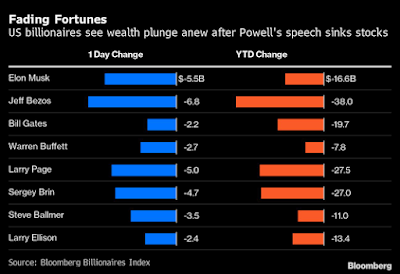In 1973, the U.S. Supreme Court legalized abortion in all 50 states in a seminal case called Roe v. Wade that quickly became a heated cultural divide in the U.S. Last week, after nearly 50 years, the conservative-majority Supreme Court overed turned Roe vs Wade, returning authority on abortion back to individual states. Justice (and history fan) Samuel Alito, writing for the majority, reasoned "abortion presents a profound moral question...the Constitution does not prohibit the citizens of each State from regulating or prohibiting abortion. Roe and Casey arrogated that authority. We now overrule those decisions and return that authority to the people and their elected representatives.”
Ok, abortion is a hot-button issue and both sides have their points. But there may be another interesting angle to this topic...crime. In 2001 economist Steve Levitt published his (most?) famous paper linking abortions to reductions in crime: "Understanding Why Crime Fell in the 1990s." From 1991 to 2001, violent crime in the U.S. fell more than 30%, after rising for three decades and Levitt wanted to understand why, explains Steve Dubner and Levitt's Freakonomics co-author in a Medium post:
Levitt explored all the commonly suggested reasons his 2001 paper...The six factors that, according to [his] analysis, did not contribute to the crime drop: a strengthening economy; the aging of the population; innovative policing strategies; gun control laws; right to carry laws; and the increased use of capital punishment. While each of these, in theory, might seem to have some explanatory power, Levitt found that none of them did...Then there were the factors he found did contribute: the increase in the number of police; an increase in the number of criminals imprisoned; and the decline of the crack-cocaine trade, which had been unusually violent. But these three factors could explain only about half of the massive drop in crime. It was as if there was some mysterious force that all the politicians and criminologists and journalists weren’t thinking about at all..."
"...Paging through the Statistical Abstract of the United States...[Levitt] saw a number that shocked him. Abortion rose so much after Roe v. Wade that by its peak (in 1990), there were 1.5 million abortions a year in the U.S. compared to 4 million live births. The magnitude surprised Levitt, and he wondered what sort of secondary effects it might have. He wondered, for instance, if it might somehow be connected to the huge drop in crime. Levitt spent a few weeks working on the idea before ultimately deciding it didn’t quite add up."
But then one of Levitt’s collaborators, John Donohue, a professor of law at Stanford Law School who also has a PhD. in economics, pointed out the "unwantedness” factor—the expansive literature showing that "children born to parents who didn’t truly want that child, or weren’t ready for that child, were more likely to have worse outcomes as they grew up; not only were health and education outcomes worse, but these so-called “unwanted” kids were disproportionately likely to engage in criminal behaviors."
Levitt and Donohue divided states into three groups: high abortion-rate states, medium abortion-rate states, and low abortion-rate states and tracked crime in all three groups over time. They found there was a 30% difference in what had happened to crime between the highest abortion states and the lowest abortion states by 1997 and through other similar tests concluded that "legalized abortion appears to account for as much as 50% of the recent drop in crime."
The paper generated a lot of buzz in the mainstream media and managed to unite to both the Right and Left in their...condemnation of the results. The Right was uneasy because the findings suggested there were positive outcomes from what they considered a reprehensible act; and the Left felt it was endorsing a form of eugenics and Minority Report-style "pre-crime" judgement.
There have been other criticisms of the paper on methodological grounds, but even in a recent update to the paper, Levitt and Donohue continue to find a strong relationship between abortion and crime between 1997 and 2014 — "states with high abortion rates saw crime rates fall 60 percent more than states with the lowest abortion rates. The magnitude of the effect is enormous." According to Levitt, the “cumulative effect over the last 30 years, if you just look at our numbers, suggests that abortion might explain something like 80 or 90 percent of the entire decline in crime.”
We'll see what the next update of the paper in 20 years or so finds.











































